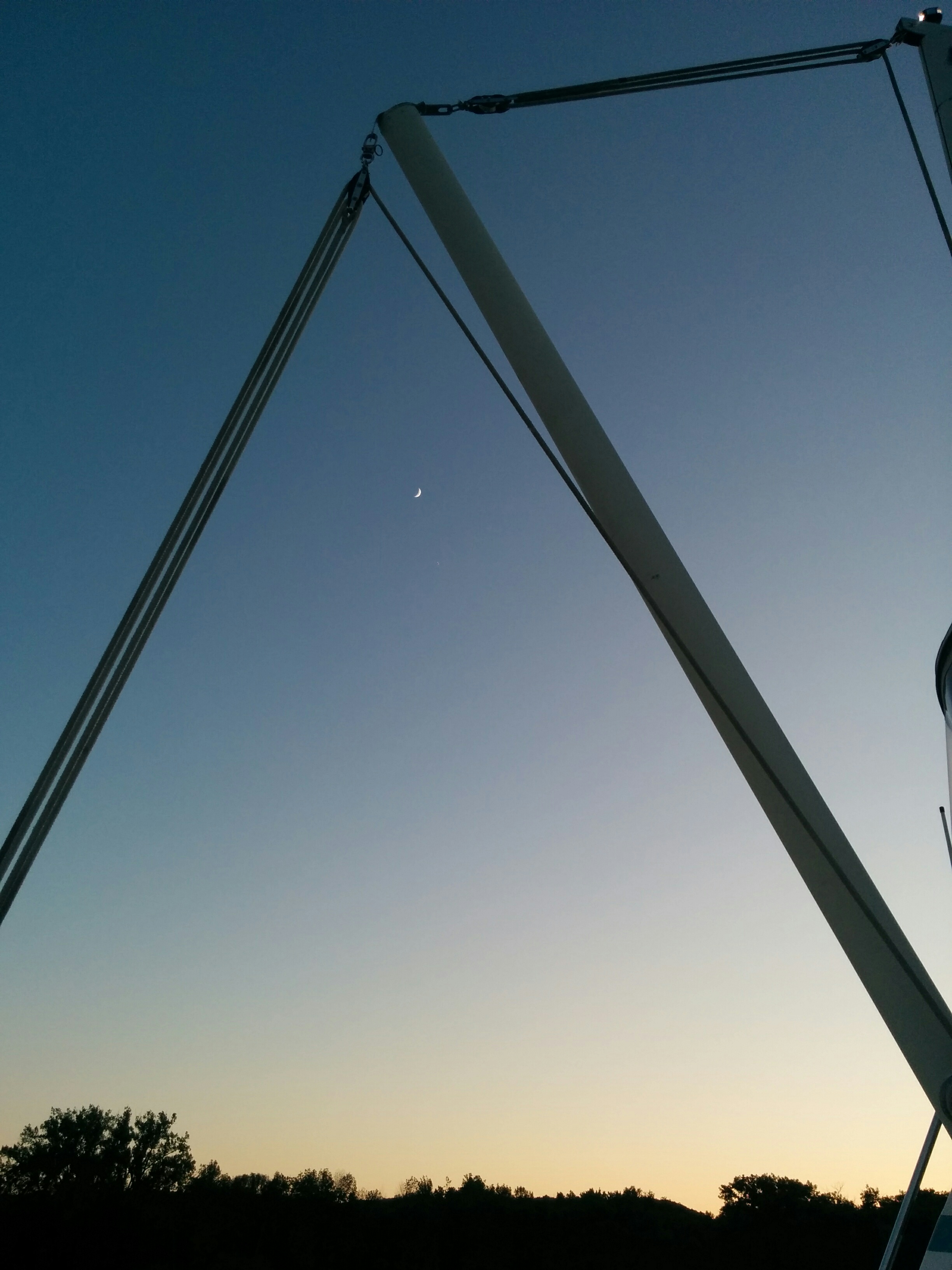Thursday, June 9th
If you’re following our track, you’ll see that we haven’t moved since yesterday. So what do you do on a boat that’s been anchored for over 24 hours? There’s always something. Cleaning, waxing, cooking, fixing things, upgrading things, checking equipment, routine maintenance. And there’s always some time for just sitting around watching the birds and trains go by, or the fish jump.

One common question all cruising boaters get is “what do you do for electricity?” Almost all the routine “house” loads run on 12VDC, just like your car. Lights, water pumps, refrigerator and all the navigation gear. We also have an 2000 Watt inverter that converts 12VDC to 120VAC, or house current. With that, we can plug in things like the microwave, coffee maker, vacuum cleaner, electric drill, even a hair drier.
All this power comes from four, 230 Amp-hour, 6V golf cart batteries. With normal usage, those can keep us going for over 24 hours without plugging in or running the generator. And if we run the main engines for more than a couple hours of traveling during the day, the batteries are already charged (by the engine alternator) and the water heater full of hot water (via waste heat from the starboard engine) when we arrive anyway.
For big loads, like the electric water heater, range and oven, we have a 7,500 Watt diesel generator. When the generator is running or when we’re plugged into shore power, all our 120VAC loads run off that, including the battery charger.
We find if we’re away from shore power, and not running the main engines much, we just need to run the generator for an hour or two a day to keep the batteries topped off and the water tank hot. If we do this while we’re preparing meals, we can use the range and oven, too.
For cooking, we can also use our electric pressure cooker and bread maker. These can run off the inverter, either from the batteries when we’re stopped, or directly from the engine alternator while underway.
All of our lighting is high-efficiency LED, and modern appliances like the refrigerator are more efficient than older ones, so the boat actually uses significantly less electricity than when it was built.
It’s becoming more common to see larger battery banks on boats, connected to ever-larger solar panel arrays. With this arrangement, a boat like ours would almost never need to run a generator.
After two days of blowing 15+ to as much as 40 knots, the wind has finally let up, at least for a while. The sky is clear and it should be a good night for star-gazing.

Tomorrow we’ll be heading for Albany (or actually, Rensselear, NY, across the river.)
Where do you wash your clothes??
The marina we’re at today has a laundry room. A lot of marinas do. We just finished two loads – the first thing we did after we tied up! Sometimes we have to walk to a laundromat in town. In a pinch, we could wash by hand in the tub, or in a bucket, but we haven’t had to resort to that yet.
True blue-water sailors just toss their clothes in a mesh bag and drag it behind the boat for a while. Or don’t wear any. Not sure either of those strategies would work here 😉